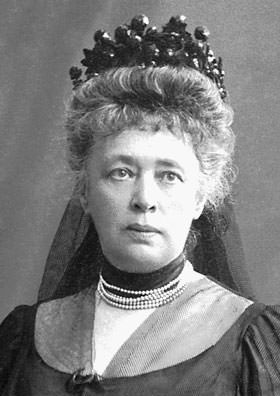Alfred Nobel was a Swedish chemist and innovator who made a large fortune mostly through his invention of dynamite and other type of explosives. Here are 10 interesting facts about the life, achievements and inventions of the man who is responsible for the Nobel Prizes.
#1 HIS FATHER WAS A SKILLED ENGINEER AND INVENTOR
Alfred Nobel was born on October 21, 1833, in Stockholm, Sweden. He was the fourth of eight children of Immanuel Nobel and Carolina Andriette Nobel. Immanuel Nobel is known for being the inventor of the rotary lathe which is used in manufacturing modern plywood. When Alfred was young his family moved to Saint Petersburg in Russia where his father became successful as a manufacturer of machine tools and explosives.

#2 HE WAS INTERESTED IN THE STUDY OF EXPLOSIVES
Alfred left Russia at the age of 18. He studied chemistry for a year in Paris and then for four years in the United States. Alfred was interested in nitroglycerin, a highly explosive liquid too dangerous for practical use. When he returned to Russia after his studies, Alfred worked together with his father to develop nitroglycerin as a commercially useful substance.

#3 HIS BROTHER EMIL DIED DUE TO AN EXPLOSION
In 1863, Alfred Nobel and his parents returned to Sweden. On 3 September 1864, when Alfred was 29, a huge explosion due to nitroglycerin in the family’s Swedish factory killed five people, including Alfred’s younger brother Emil. This however didn’t deter Nobel from continuing with his study of explosives, especially of the safe manufacture and use of nitroglycerin.

#4 ALFRED NOBEL IS THE INVENTOR OF DYNAMITE
Alfred Nobel invented dynamite in Geesthacht, Germany and patented it in 1867. It was the first safely manageable explosive. In dynamite, nitroglycerin was incorporated in an absorbent inert substance which made it safer and easier to handle. Initially Nobel considered naming it “Nobel’s Safety Powder” but ultimately named it after the Greek word for ‘power’, Dynamite

#5 HE EARNED A LOT OF MONEY THROUGH HIS INVENTION OF GELIGNITE
Nobel went on to combine nitroglycerin with other compounds. In 1875 he invented Gelignite or blasting gelatin which was easily moldable, safer to handle without protection and a more powerful explosive than dynamite. Patented in 1876, Gelignite was adopted as the standard technology for mining in the Age of Engineering bringing Nobel a great amount of financial success.

#6 ALFRED NOBEL HELD 350 PATENTS
During his life Nobel issued 350 patents internationally. He filed his first patent in 1857 for a gas meter. His inventions include detonator, blasting cap and ballistite, the precursor of many modern smokeless powder explosives and still used as a rocket propellant. Nobel also established 90 armaments factories by the time of his death. He owned Bofors and was the founder of the chemical and weapons company Dynamit Nobel.
#7 HE WAS CALLED THE MERCHANT OF DEATH
In 1888, Alfred’s brother Ludvig died while he was in France and a French newspaper erroneously published the obituary of Alfred instead. Titled “The Merchant of Death is Dead”, it went on to say “Dr Alfred Nobel, who became rich by finding ways to kill more people faster than ever before, died yesterday.” Nobel was nicknamed the Merchant of Death because he made his fortune through explosives, which were also used for warfare.

#8 ALFRED ESTABLISHED THE NOBEL PRIZES THROUGH HIS WILL
After reading his own obituary, Nobel became concerned about how he would be remembered after his death. On 27 November 1895, Nobel signed his last will which left 94% of his total assets, 31,225,000 Swedish kronor (equivalent to 250 million U.S. dollars in 2008), to establish the five Nobel Prizes for outstanding achievements in physics, chemistry, medicine and literature, and for working toward peace.

#9 HIS EX-LOVER CONVINCED HIM TO INCLUDE THE PEACE PRIZE
Although Nobel was briefly involved with Bertha Kinsky, who went on to marry Baron Arthur Gundaccar von Suttner. Kinsky corresponded with Nobel till his death and it is believed that she was a major influence in Nobel’s decision to include a peace prize among the prizes in his will. She went on to become the first female recipient of the Nobel Peace Prize in 1905.

#10 SYNTHETIC ELEMENT NOBELIUM IS NAMED AFTER HIM
Alfred Nobel died of a stroke on December 10, 1896, in San Remo, Italy. Though he had a few love relationships, he never married. Just before his death, he wrote a tragic play titled Nemesis. The first Nobel Prizes were awarded in 1901, 5 years after his death. The synthetic element nobelium is named after him. The Monument to Alfred Nobel was created in his honor in Saint Petersburg.


Nice!!!